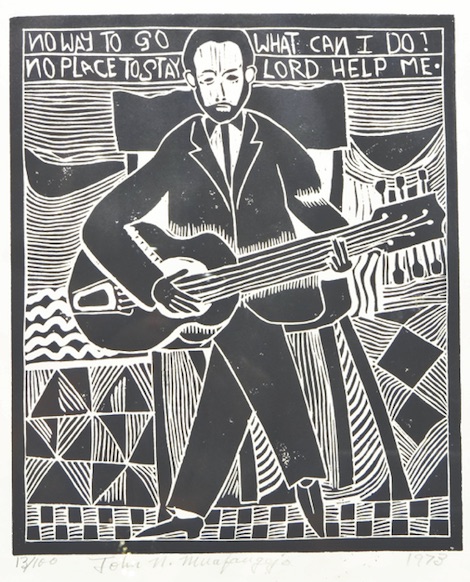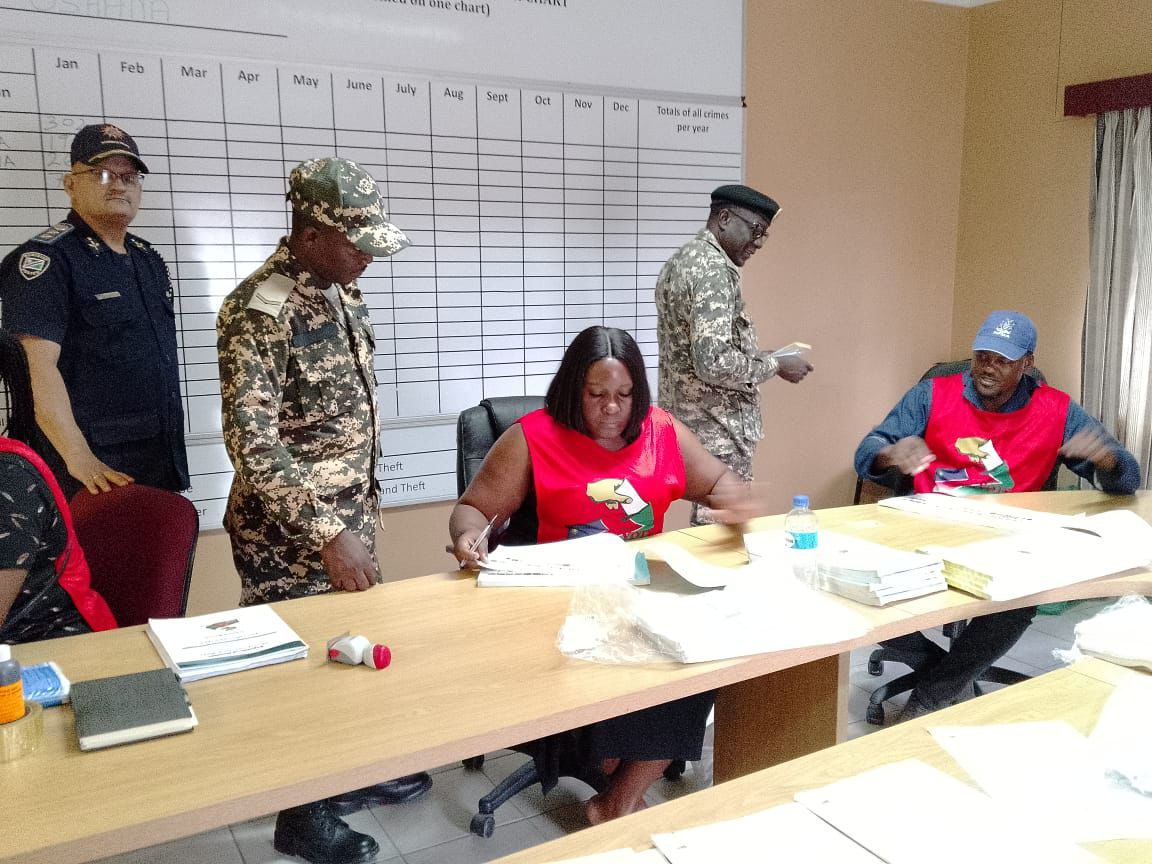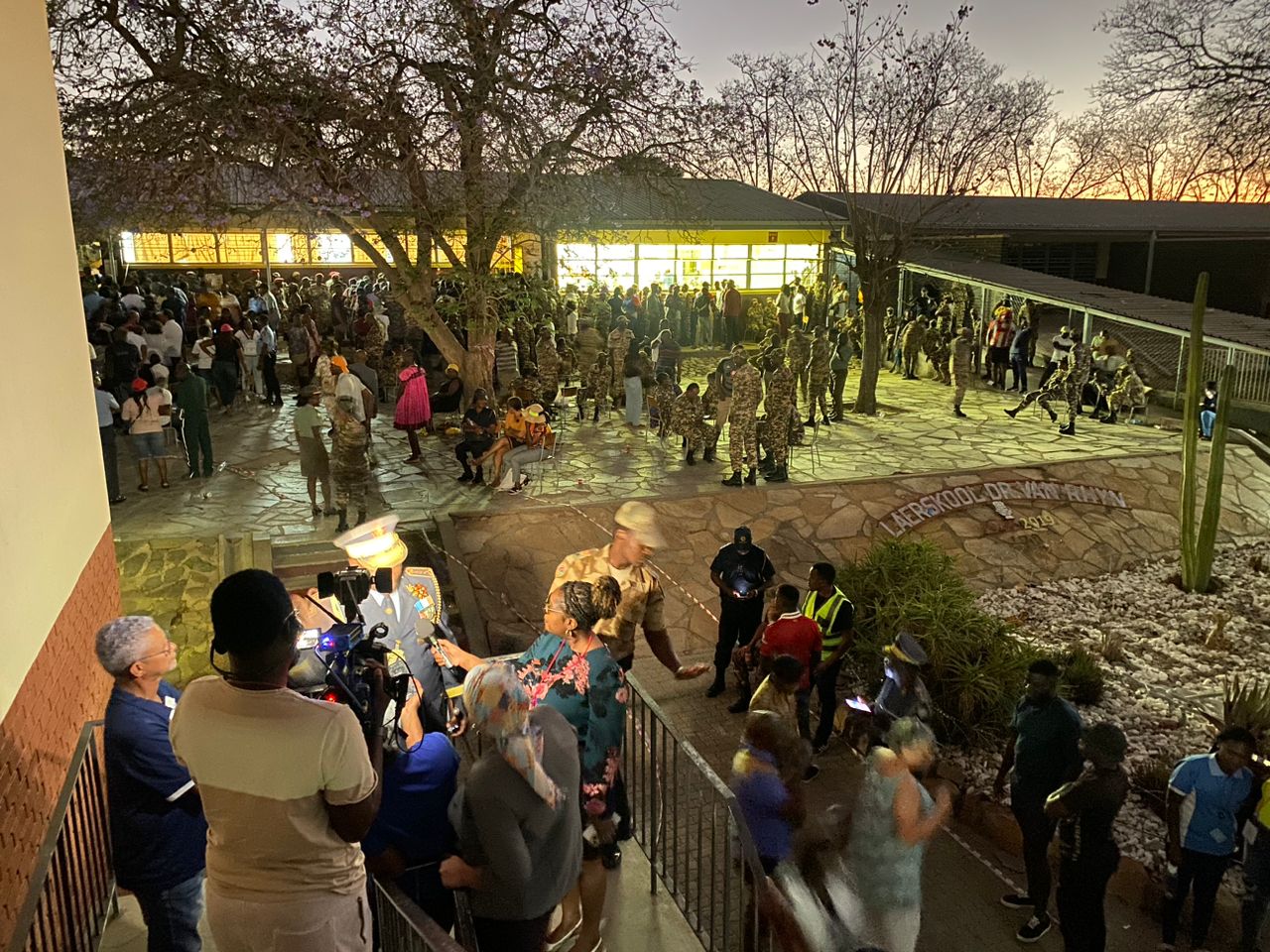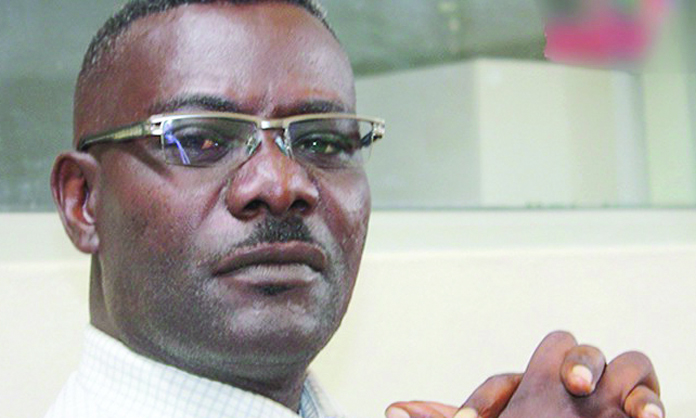In the lower chambers of the National Art Gallery of Namibia (NAGN), John Muafangejo whispers from the walls.
The tales the people’s artist tells of his short life are etched into his celebrated, monochromatic linocuts as integrated exposition.
Year after year since his death in 1987, Muafangejo speaks.
He speaks of Kwanyama weddings, of an Anglican seminary bombing near the border of Angola and Namibia in 1981, and he eulogises his teacher and best friend Stephen Wedinge Paulus Shinana, who Muafangejo describes as a born craftsman.
As part of ‘NAGN Narrating John Muafangejo’s Story’, a showcase of the artist’s works from the NAGN’s permanent collection, the gallery invites those who knew Muafangejo to expand on what has already been written, distorted or remains untold.
In the first of these virtual ‘NAGN Dialogues’ featuring artists Ndasuunje Papa Shikongeni and Alfeus Mvula, the NAGN’s collections curator Desiree !Nanuses shares a sobering sample of misinformation.
“You will not believe it. While I was reading up, I actually found that he’s even classified as a South African artist. How did that happen? We have to start telling the story ourselves. I would like to see Muafangejo being taught in-depth in our education system and this alongside more works that are contemporaries,” !Nanuses says.
Shikongeni, who knew Muafangejo when he was alive, describes the artist as “a revolutionary through art”.
“He is the legacy and the legend.”
Muafangejo was of Kwanyama heritage and herded cattle as a child before attending missionary schools at Epinga and Odibo where a missionary encouraged his artistic talent. Eventually Muafangejo attended Rorke’s Drift Art and Craft Centre in South Africa, where his gift for etching and linocut set him apart.
Muafangejo’s art has been exhibited and takes pride of place in collections all around the world. A 1975 linocut titled ‘Zimbabwe House’ from the collection of Orde Levinson was sold for N$410 375 at a Strauss & Co auction last year. The sale set a new price record for the artist, who died on 27 November 1987.
“Why were we not given the first choice to buy his works rather than it going up on a public auction?” says !Nanuses, articulating just a tiny portion of the complex, at times controversial, dissemination and ownership of Muafangejo’s oeuvre.
Though Muafangejo is world renowned for his intricate linocuts which immortalise Namibian tradition, culture and everyday life, his personal triumphs, defeats and tragedies as well as his relationship with the church, Shikongeni recalls that he was in fact a multidisciplinary artist.
“People think Muafangejo only produced lino but he produced etchings, carpets, stone sculptures and wood sculptures,” says Shikongeni.
Mvula like Shikongeni believes we have scarcely scratched the surface of Muafangejo’s story.
“He left a lot of untold history,” says Mvula. “Nobody knows about all of his artwork. What you [NAGN] have and what is in London, I think is very different. He needs to be represented in a national way.”
!Nanuses suggests that one of the drivers of such representation is the NAGN. To that end, the exhibition is an effort to document, secure and share Muafangejo’s influential legacy.
“We have to set that tone. How we are going to regard him, what we are going to say of him, in what aspect are we going to speak of him and the fact that we appreciate him,” says !Nanuses.
“The subjects that we have currently and that can be seen in the space have to do with the homesteads, the environments, grazing. It’s the wedding. It’s Adam and Eve. It’s religion. It’s the beginning of things,” she says.
“What you can see evidently is how the church was used as a place to have these meetings activating people for liberation. It’s all of that.”
‘NAGN Narrating John Muafangejo’ will be on display until the end of June 2022, and contemporary creatives will be invited to respond to the NAGN Dialogues and to the exhibition itself.
“Our stories always talk about the Western and speak from their perspective. It’s good that you [NAGN] give us this opportunity or the platform to speak from the perspective of a child who also comes from the villages in Ovamboland,” says Shikongeni.
“Do you know what the name means?” says Shikongeni, considering the meaning of Muafangejo’s name. “It means ‘are you like me?’”
“So Alfeus, Peter Mwahalukange, Joseph Madisia, Jero, all the artists who are in the field of printmaking, they are like his name: Are you like me?” says Shikongeni.
“It’s like you are invited to become like him.”
– martha@namibian.com.na; Martha Mukaiwa on Twitter and Instagram; marthamukaiwa.com
Stay informed with The Namibian – your source for credible journalism. Get in-depth reporting and opinions for
only N$85 a month. Invest in journalism, invest in democracy –
Subscribe Now!






